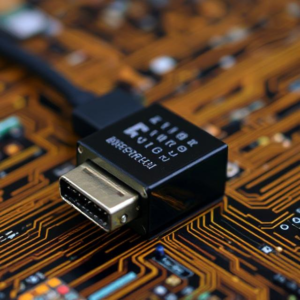1. What is a Network?
A network is a group of computers or devices that are connected together to share information, resources (like printers, files), and services. Networks can be as small as a home Wi-Fi or as large as the internet connecting millions of devices around the world.

2. What is a Protocol?
What is a Network Protocol?
A protocol is a set of rules or standards that determine how devices communicate over a network. It’s like a language or set of instructions that ensures computers, phones, and other devices understand each other.
How Do Protocols Work?
When two devices (like a computer and a server) want to communicate, they follow a protocol to send and receive data in a way that both can understand.
Common Network Protocols:
- HTTP (HyperText Transfer Protocol): Used for accessing websites (e.g., when you visit a website, your browser uses HTTP to talk to the website’s server).
- FTP (File Transfer Protocol): Used for transferring files between computers over the internet.
- TCP/IP (Transmission Control Protocol / Internet Protocol): A combination of protocols that help computers communicate over a network. It’s the foundation of the internet and most modern networks.
- DNS (Domain Name System): Translates domain names (like www.example.com) into IP addresses (like 192.168.1.1) that computers can understand.
Why Are Protocols Important?
Protocols are important because they allow different types of devices to communicate and exchange information in a standardized way. Without protocols, there would be confusion, and devices wouldn’t understand each other.
3. What is IP Addressing?
What is an IP Address?
An IP address (Internet Protocol Address) is a unique identifier assigned to every device on a network. It’s like the home address of your device on the internet or any local network. Just like how your house has an address for mail delivery, an IP address allows data to be sent to the right place.
There are two types of IP addresses:
- IPv4: The most common type of IP address. It looks like this:
192.168.1.1. It’s made up of four sets of numbers, each ranging from 0 to 255, separated by periods (dots). - IPv6: A newer type of IP address used to handle the growing number of devices needing IP addresses. It’s longer and looks like this:
2001:0db8:85a3:0000:0000:8a2e:0370:7334.
Why Do We Need IP Addresses?
Without IP addresses, data packets wouldn’t know where to go. Think of it like sending a letter. If you didn’t have a recipient’s address, the letter would never reach its destination.
Dynamic vs. Static IP Addresses:
- Dynamic IP Address: Assigned by your Internet Service Provider (ISP) and can change over time.
- Static IP Address: A fixed IP address that doesn’t change, often used by servers or important devices like websites.
4. What is Subnetting?
What is Subnetting?
Subnetting is the process of dividing a large network into smaller, more manageable subnetworks (called subnets). It’s like breaking down a big city into smaller neighborhoods. This helps organize and optimize the network.
Why Do We Need Subnetting?
Subnetting helps in efficiency and security:
- It reduces network traffic by limiting the number of devices that communicate with each other within a subnet.
- It allows better management of IP addresses, especially when there are a large number of devices on the network.
- It improves security by isolating certain devices in separate subnets, making it harder for attackers to access everything on the network.
How Does Subnetting Work?
- Networks are made up of IP addresses. When we subnet a network, we divide the available IP addresses into smaller groups.
- Subnetting uses something called a subnet mask to determine which part of the IP address represents the network and which part represents the host (or device).
Example:
Let’s take the IP address 192.168.1.0/24.
- 192.168.1.0 is the network address.
/24is the subnet mask that tells us how many addresses can belong to that network. In this case, it’s allowing 256 possible addresses (from192.168.1.0to192.168.1.255).
Subnetting helps in creating smaller networks, so instead of using all 256 addresses in one large network, we can break it down into subnets that fit specific needs, like creating subnets for different departments in a company (e.g., one for HR, one for Sales).
Subnetting Example in Action:
- If we had the IP address
192.168.1.0/24and wanted to split it into two smaller subnets, we could use subnetting to create two subnets:- Subnet 1:
192.168.1.0/25(Addresses from192.168.1.0to192.168.1.127) - Subnet 2:
192.168.1.128/25(Addresses from192.168.1.128to192.168.1.255)
- Subnet 1:
This is helpful in large organizations to manage different sections of the network and keep them isolated.
Summary:
- Protocols are like the rules for how devices communicate over a network. Examples include HTTP, FTP, and TCP/IP.
- IP Addressing is about giving each device on a network a unique address to send and receive data. Common IP address types are IPv4 and IPv6.
- Subnetting divides a larger network into smaller, manageable subnets, which helps with organization, security, and efficiency in managing large networks.
Why Are These Concepts Important?
- Protocols make sure devices can communicate clearly and reliably.
- IP addresses help send data to the right location.
- Subnetting helps organize the network, improve security, and make better use of IP addresses.











